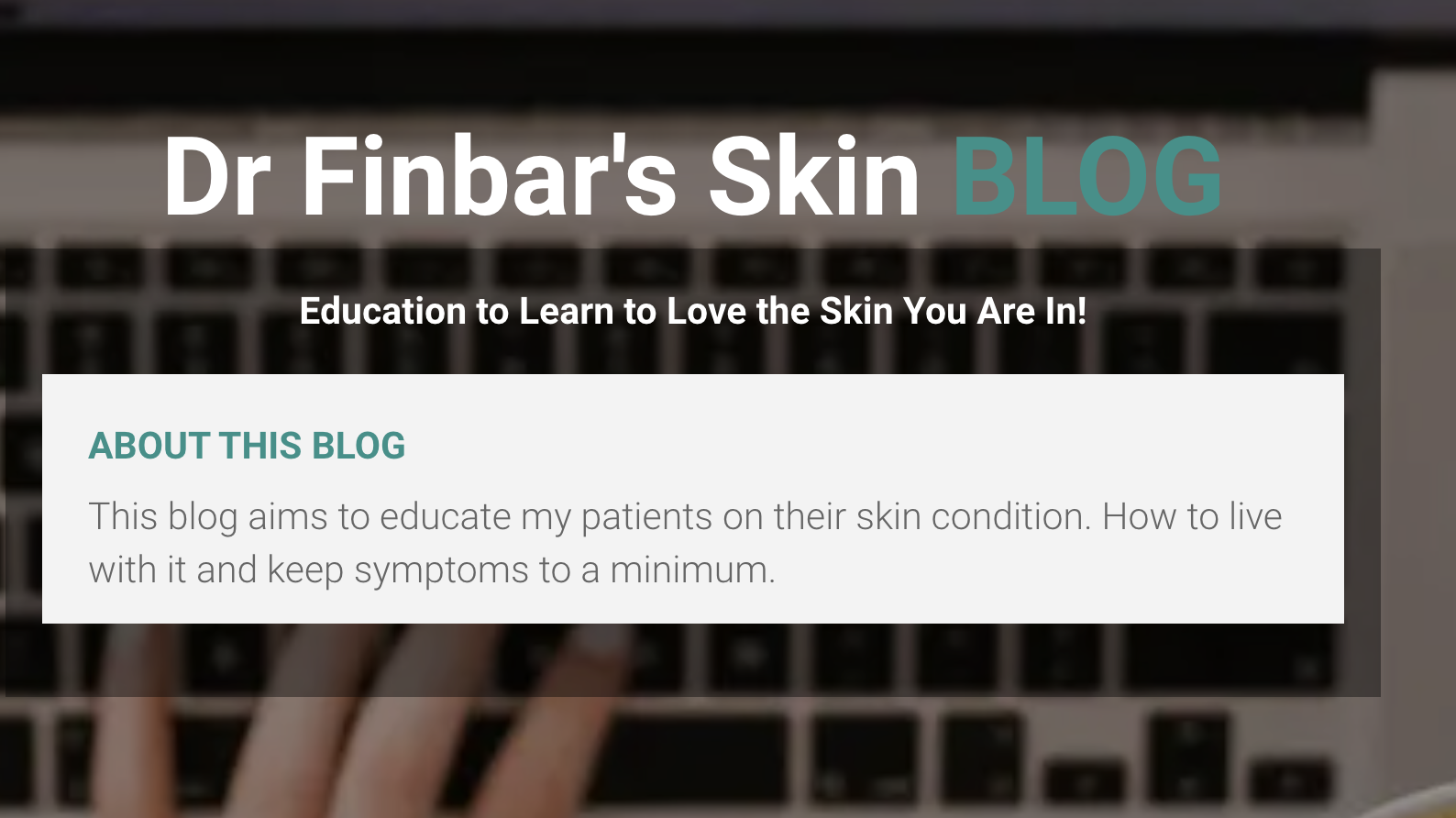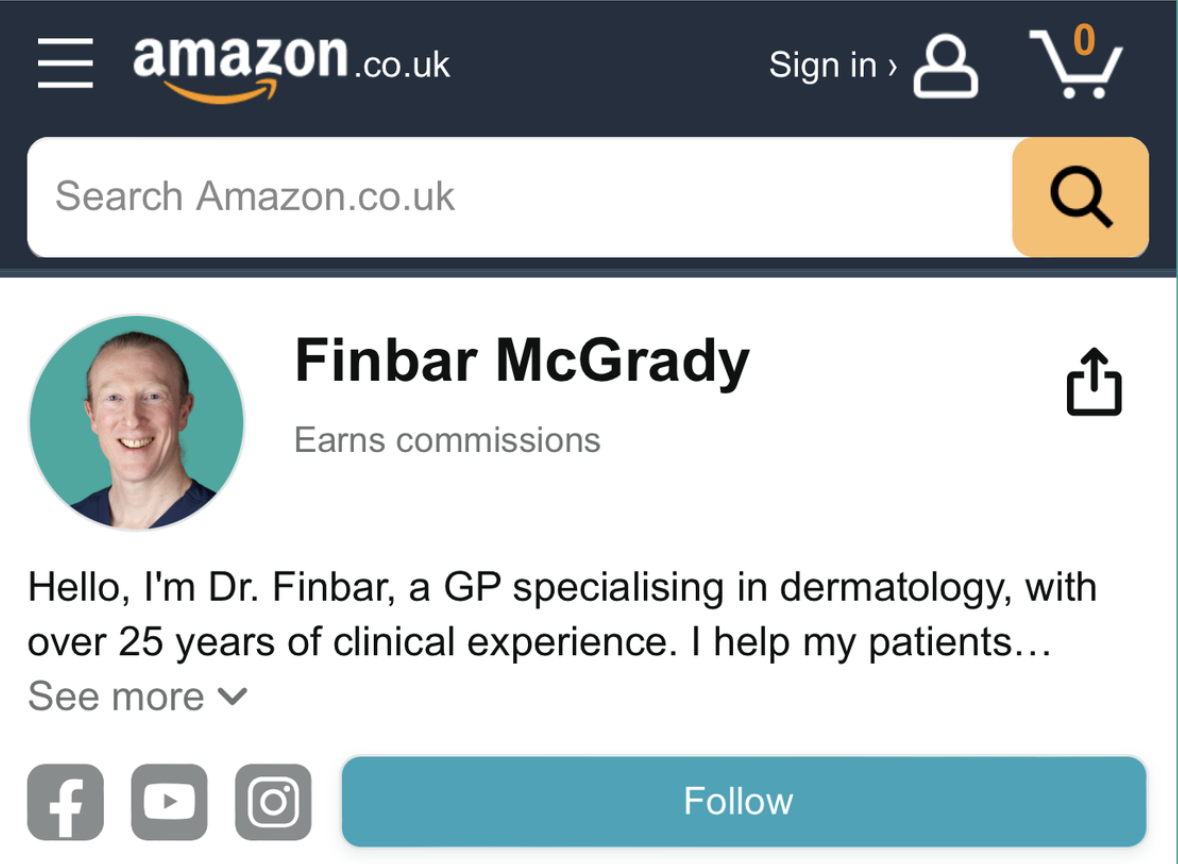The Different Types of Skin Cancer: What You Need to Know
Did you know that skin cancer is the most common type of cancer in the world? The good news is that early detection saves lives.
In this article, I’ll walk you through the three main types of skin cancer—basal cell carcinoma (BCC), squamous cell carcinoma (SCC), and melanoma—as well as a few rarer types. I’ll also explain what to look out for and who should consider regular skin checks.
I’m Dr. Finbar, a GP specialising in dermatology. My goal is to help you better understand your skin and take steps to protect your long-term health.
1. Basal Cell Carcinoma (BCC)
Basal cell carcinoma is the most common type of skin cancer. It’s usually slow-growing and rarely spreads to other parts of the body, but that doesn’t mean it’s harmless. Left untreated, BCCs can grow deep into surrounding tissues and cause disfigurement—especially around sensitive areas like the nose, ears, or eyes.
What to Look For:
-
A scabby or crusty lesion that bleeds and comes back again and again
-
Pearly or skin-coloured lumps
-
Sometimes pigmented lesions, especially in darker skin tones
Who’s at Risk:
-
People with fair skin
-
Those with a history of sun exposure over many years
Treatments:
-
Topical creams (e.g. 5-fluorouracil, imiquimod) for superficial BCCs
-
Surgical excision for most other cases
-
Mohs surgery for aggressive or facial BCCs
-
Radiotherapy or newer injectable immunotherapies in select advanced cases
More information in this blog post.

2. Squamous Cell Carcinoma (SCC)
Squamous cell carcinoma is the second most common type of skin cancer. It’s more aggressive than BCC and carries a greater risk of spreading—especially to lymph nodes.
SCC often arises from precancerous lesions such as actinic keratosis or Bowen’s disease, but can also appear suddenly in healthy skin.
What to Look For:
-
A scaly patch or red lump
-
A sore or ulcer that doesn’t heal
-
A lesion that grows noticeably over weeks
Who’s at Risk:
-
People with long-term sun exposure
-
Individuals with weakened immune systems
Treatments:
-
Surgical excision (with careful analysis of margins and pathology)
-
Radiotherapy
-
Advanced SCC may be treated with injectable immunotherapy such as cemiplimab
More information in this video.

3. Melanoma
Melanoma is the least common of the three main types, but it’s the most dangerous. It arises from melanocytes, the pigment-producing cells in the skin. It can appear in a mole—but around two-thirds of cases arise in normal-looking skin.
What to Look For:
Use the ABCDE rule to check moles and lesions:
-
A – Asymmetry: One half doesn’t match the other
-
B – Border: Irregular or poorly defined edges
-
C – Colour: More than one shade (brown, black, red)
-
D – Diameter: Over 6mm or noticeably different from other moles
-
E – Evolving: Changing in size, shape, colour, or symptoms (itching/bleeding)
Also look for nodular melanomas, which may be:
-
Elevated
-
Firm
-
Growing
Who’s at Risk:
-
Fair-skinned individuals
-
Those with a history of sunburn or UV exposure
-
People with a family history of melanoma
Treatments:
-
Wide local excision
-
Sentinel lymph node biopsy in some cases
-
Immunotherapy or targeted treatments in advanced disease
Early detection is key—melanomas caught early can have a very high cure rate.

Rare Types of Skin Cancer
While BCC, SCC, and melanoma make up the vast majority of cases, here are a few rarer types worth being aware of:
-
Merkel Cell Carcinoma: A fast-growing, aggressive cancer usually seen in older adults. Appears as a painless, firm nodule.
-
Atypical Fibroxanthoma: A rare, low-grade tumour that looks like a red nodule or plaque.
-
Kaposi Sarcoma: Develops from blood vessels, often seen in immunocompromised individuals (e.g., those with HIV).
-
Cutaneous Metastases: Sometimes, skin lumps turn out to be secondary cancers from internal organs. Rapid appearance of multiple lesions can be a clue.
Who Should Have Regular Skin Checks?
Skin checks save lives—especially when performed by someone trained in skin lesion recognition. Here’s how the risk levels break down:
High Risk (Screen every 6–12 months):
-
Previous melanoma
-
Multiple atypical moles
Increased Risk (Check opportunistically):
-
Family history of melanoma
-
Fair skin, freckles, history of sunburn
-
Previous non-melanoma skin cancer
Average Risk:
-
No personal or family history
-
Medium to darker skin tones
-
Follow general sun safety advice; routine checks only if new symptoms appear
Sun Protection: Your First Line of Defence
The best way to prevent skin cancer is protecting your skin from UV rays. I’m a big believer in enjoying the outdoors—but doing so safely. That means:
-
Wearing hats and protective clothing
-
Avoiding peak UV hours (typically 11 am–3 pm)
-
Using broad-spectrum SPF 30+ sunscreen
There’s been some recent debate about sunscreen safety—I’ve addressed that in detail in the following video, where I explain how to use sunscreen effectively and safely.
In Summary
Skin cancer is common, but most cases are treatable—especially when caught early. Knowing the signs and taking preventive steps can make all the difference.
If you're unsure about a mole or spot, don’t wait. Book a professional skin check, especially if you’re in a higher risk group.
Share this post on:
Copyright © 2024 Dr Finbars' Skin Clinic All rights reserved.



